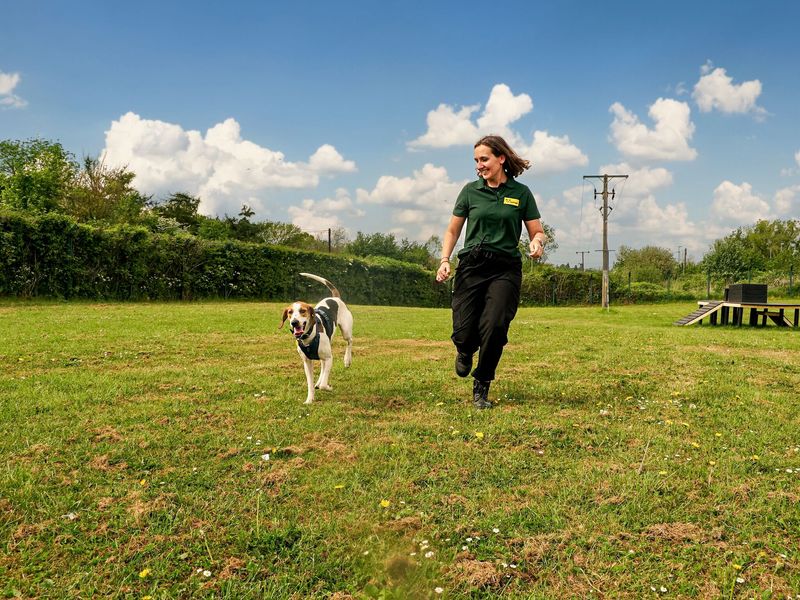How to train your dog to come back when called
Keep your dog safe by teaching them to return to you.

Most dogs love having a good run off their lead.
But before you let your pooch loose, you need to be confident that they’ll always come back when you call; whatever’s going on around them.
You need to teach your dog that coming back to you is always a good thing, and will result in tasty snacks, a fuss, or whatever reward they like best
Why your dog won’t listen to you
When you let your dog off their lead, a whole world of choice opens up to them.
Your dog could decide that chasing a squirrel or playing with another dog is more exciting than coming back to you (they see you every day, after all).
They could also be unsure that you want them to return.
Three easy steps to teach your dog to come back when called
1. Teach your dog to respond to their name before adding recall
Teaching your pooch their name makes it easy for you to grab their attention when you need it. This can be a lifesaver if you need them to focus on you quickly to save them from harm.
After you’re confident you can get their attention, you can add in your chosen recall …
2. Always reward your dog when they come back
Start indoors, in your garden, or in another enclosed space with some tasty treats to hand.
Get your dog’s attention with their name, then use your recall cue and take a step away from them. Reward them with praise and a tasty treat when they come to you.
Make …
3. Add in some distractions and increase the length of the recall distance
Gradually increase the distance between you and your dog and the level of distractions you call them away from. You can eventually leave the garden and venture out into the world.
Let them move away from you before using your recall cue, and use a long line attached to …
What to do if your dog keeps running away from you
Running off can be very unsafe for your dog.
Busy roads, other dogs, farmed animals, and dog thieves are just a few of the possible dangers if they’re running around unsupervised.
If your pooch keeps darting off when you call them, stick with training on a long lead attached to a harness, and only let them off-lead in secure areas.
Only let your dog off their lead in open spaces when you’re confident they’ll come back when called.
If you aren’t seeing an improvement with your dog’s training, you may wish to contact a qualified trainer or behaviourist to help.
Always ensure your dog is wearing a collar and ID tag at all times in public and that microchip details are kept up-to-date. This is law in the UK and will help you reunite with your best pal if they get lost.
If you find your dogs recall isn't quite where is should be, it might be worth enrolling in some dog training lessons. Contact our free Behaviour Support Line for tailored advice.
Related articles





